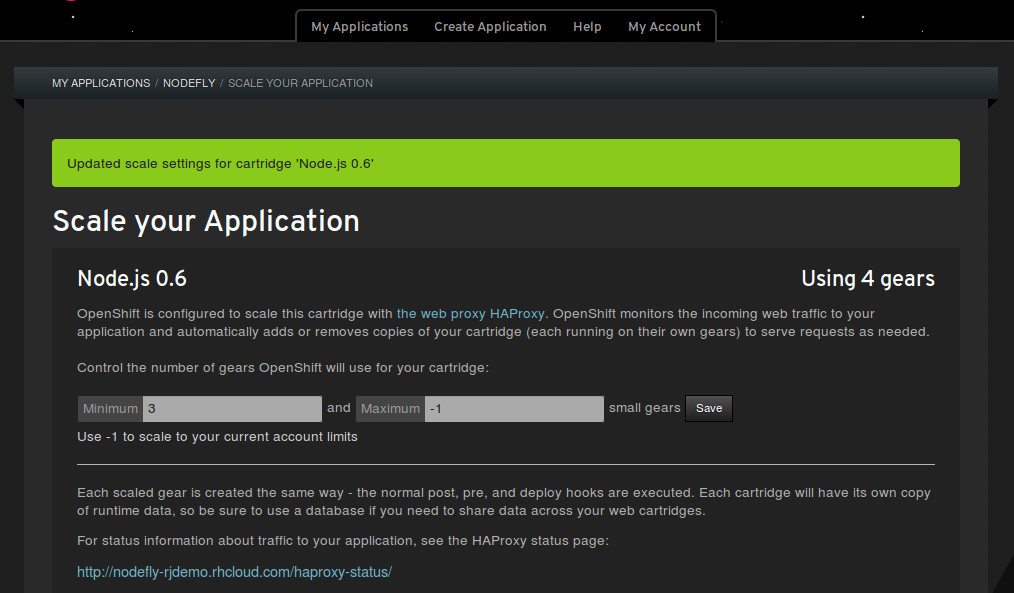PG Open Cloud
Portable PG applications
Agenda
- Open Cloud Overview
- Learn how to write for the Open Cloud
the Cloud
"what is it made of?"
The cloud is:
- hot air?
- a series of tubes?
- mostly cat photos✓
Infrastructure
- Communications: fiber, switches, wireless
- Storage and Compute: chips, servers, disks, databases
- …
- DevOps (and friction)
- …
- Software as a Service: Dropbox, Gmail
IaaS
- Amazon EC2
- RackSpace
- Linode
- BlueHost
* Many are VM / VPS-based services
Building with Postgres normally looks like:
- Install Apache with Mod_WSGI
- Make sure we have all the Python extensions set so Apache can see them
- Configure firewall so that only http, https, and ssh are available to outside world
- Install Postgresql, and plugins
- update PG_hba.conf, create db user, create db user password, set up access privs, and a test account
- Create DB, give user permissions to the DB
- Set up a git repository and then figure out how to structure and deploy
- Now I can write code - hello world, then database connection, then real app
- Get it working with a public DNS
- Now you are stuck maintaining the machine
OR - if your Ops team offers pre-built VMs:
- Fill out a mile high stack of request forms for a VM from Ops and wait
- Then realize it's not configured properly, submit ticket and wait
- Repeat same information, and wait
- Your ops person moves to a different group, GOTO Line 1....
As a sysadmin:
- We're busy keeping the site up, we'll need to provision your VM later
- Developers always want to try a new language or datastore that they don't know how to install, let alone manage
- There is whole bunch of account creation and lockdown for each VM. I'll need to give them Sudo or they'll annoy me all the time
- Each machine ends up with a wildly different config
- Developers never give up the resources from their VMs - spreadsheets and emails
- If there is a security fix I need to go into each VM and update it
- I don't want to spend my time updating DNS tables
Platforms provide a peaceful environment for Devs AND SysAdmins

- Operations can ensure stability and performance
- Developers can self-provision environments without waiting
- The discussion shifts toward establishing policies for scaling

Public / Hosted PaaS
- Heroku
- EngineYard
- Google App Engine
- Amazon BeanStalk
* usually VM-based or proprietary application container technologies

the public cloud
This all sounds great, but what about…
Lock-in?
the Open Cloud
IaaS
- OpenStack
- Eucalptus
- CloudStack
- Or, roll your own

Open PaaS
- OpenShift
- Cloud Foundry
Built around Containers
Triumph of the Open Cloud
When "Big Cloud" fails you, you can always decide to host your own
TinyTinyRSS
Reusable, Redeployable code - host it anywhere
https://github.com/openshift-quickstart/tiny_tiny_rss-openshift-quickstart
rhc app create rss php-5 postgresql-9 cron-1.4 --from-code=https://github.com/openshift-quickstart/tiny_tiny_rss-openshift-quickstart.gitAdding Postgres to existing applications:
rhc cartridge add postgres-8.4rhc cartridge add postgres-9.2done!
rhc app show rssOr, while connected over ssh:
env | grep DBOPENSHIFT_POSTGRESQL_DB_PASSWORD=lXcFVx4hIZgR
OPENSHIFT_POSTGRESQL_DB_SOCKET=/var/lib/openshift/523672f7e0b8cd02d70003bc/postgresql/socket/
OPENSHIFT_POSTGRESQL_DB_HOST=127.7.8.130
OPENSHIFT_POSTGRESQL_DB_PID=/var/lib/openshift/523672f7e0b8cd02d70003bc/postgresql/pid/postgres.pid
OPENSHIFT_POSTGRESQL_DB_USERNAME=adminpahue6e
OPENSHIFT_POSTGRESQL_DB_URL=postgresql://adminpahue6e:lXcFVx4hIZgR@127.7.8.130:5432
OPENSHIFT_POSTGRESQL_DB_PORT=5432
OPENSHIFT_POSTGRESQL_DB_LOG_DIR=/var/lib/openshift/523672f7e0b8cd02d70003bc/postgresql/log/Terminology (Red Hat)
- Broker – Management host, orchestration of Nodes
- Node – Compute host containing Gears
- Gear – Allocation of fixed memory, compute, and storage resources for running applications
- Cartridge – A technology/framework (Python, Ruby, Javascript, PHP, Perl, Java/JEE, PG, MySQL, Jenkins, PHPMyAdmin, etc.) for application service dependencies
Gears: Secure and Efficient

An Open Cartridge format


Open, and working in the Upstream

Writing Apps for the Open Cloud
ToDo App
(flask and SQLAlchemy)
https://github.com/shekhargulati/todo-flask-openshift-quickstart
blog post: Build Your App on OpenShift Using Flask, SQLAlchemy, and PostgreSQL 9.2
rhc app create -s task python-2.7 postgresql-9.2 --from-code=https://github.com/shekhargulati/todo-flask-openshift-quickstart.gitOpenShift Scaling Hooks
Setting a min and max scale from the command line
rhc cartridge-scale python-2.7 -a task --min 3 --max 5Scaling Web UI
HAProxy Scaling Hooks
Adding and removing instances / scaling up and down
haproxy_ctld --uphaproxy_ctld --downHAProxy on / off switches
haproxy_ctld_daemon starthaproxy_ctld_daemon stophaproxy_ctld_daemon restartThese hooks are available on the command line within your gear, and via a REST API
HAProxy Web UI
http://$YOUR_APP_DNS/haproxy-status/
HAProxy raw data
http://$YOUR_APP_DNS/haproxy-status/;csv
Living in the clouds
Code for America
Adopt a Cause
https://github.com/openshift-quickstart/adopt-a-hydrant-openshift-quickstart
This app should be using PostGIS for spatial queries:
Persist configuration details,
while keeping your source clean:
rhc app create hydrant ruby-1.9 postgresql-8.4 --from=code=http://github.com/ryanj/adopt-a-hydrant.git --env SECRET_TOKEN="YOUR_SECRET_TOKEN"Environment Variables
Listing your custom env vars:
cd hydrant
rhc env listSetting a variable:
rhc env set SECRET_TOKEN="a1fdacc3b1d14d6a92ed1219ed304d02529f535085262a90c39f072ef6de0ee9fe3a3d0194f02a2a8eb3"Help with configuration:
rhc help envDependencies
Automatic support for dependency resolution using standard packaging, native to each language:
gems (ruby), eggs (python), and npm modules (node.js)
Mapping National Parks
with PostGIS
- NodeJS / restify:
https://github.com/ryanj/restify-postGIS - Pyton / Flask:
https://github.com/ryanj/flask-postGIS - Java / JaxRS:
https://github.com/thesteve0/javaparks
Action Hooks
- enable postgis
- create your table schema
- add a geospatial index
- bootstrap your db
https://github.com/ryanj/flask-postGIS/tree/master/.openshift/action_hooks
Open Source Banners!
http://parkgis-shifter.rhcloud.com/
Join the Community
- Meritocracy for our pull requests
- Help with anything from core, quickstarts, and cartridges, to small typo fixes in the command line tools
- PEPs for major feature enhancements
- Contribution Guidelines
- Public Trello cards
- Public Test plans
- Public Bugzilla
- Vote on Features
Check out the upstream source:
OpenShift Origin
Try our hosted solution (3 apps free):
OpenShift Online
Request an evaluation for:
OpenShift Enterprise
Thanks for following along! --ryanj
slides: http://bit.ly/1eddml6

